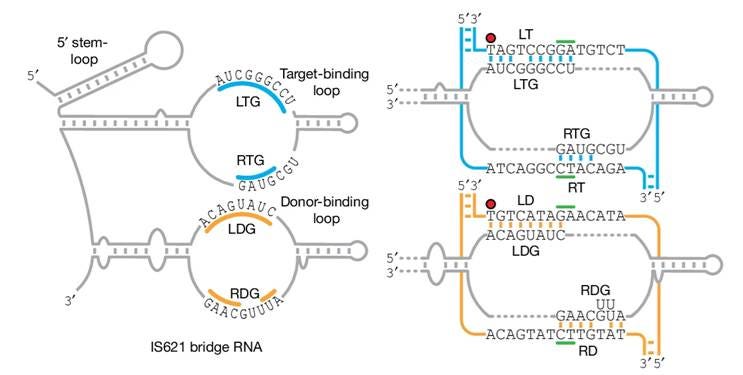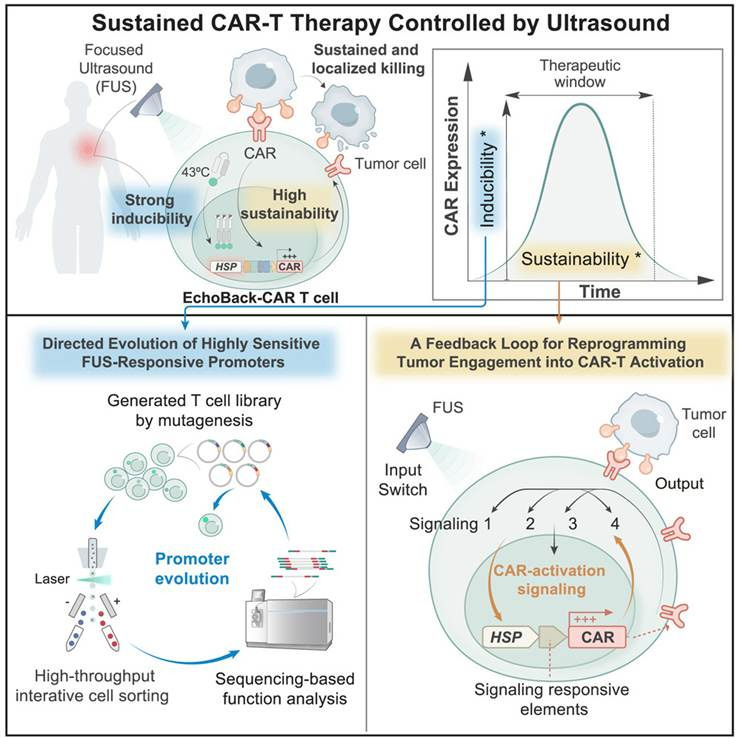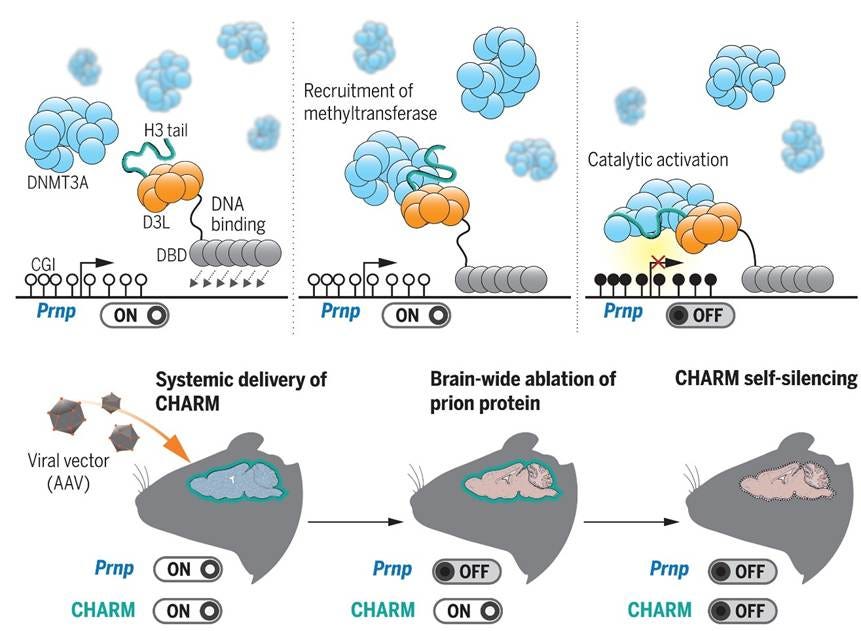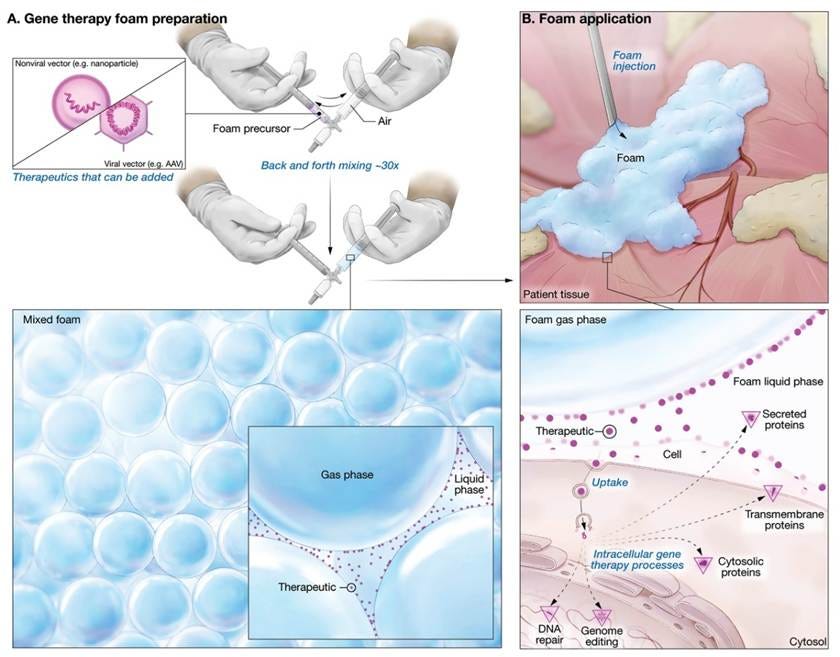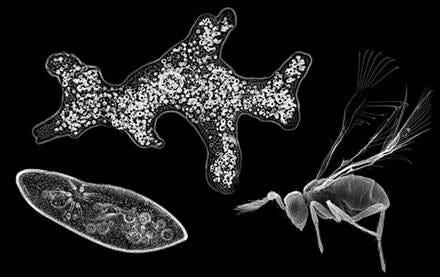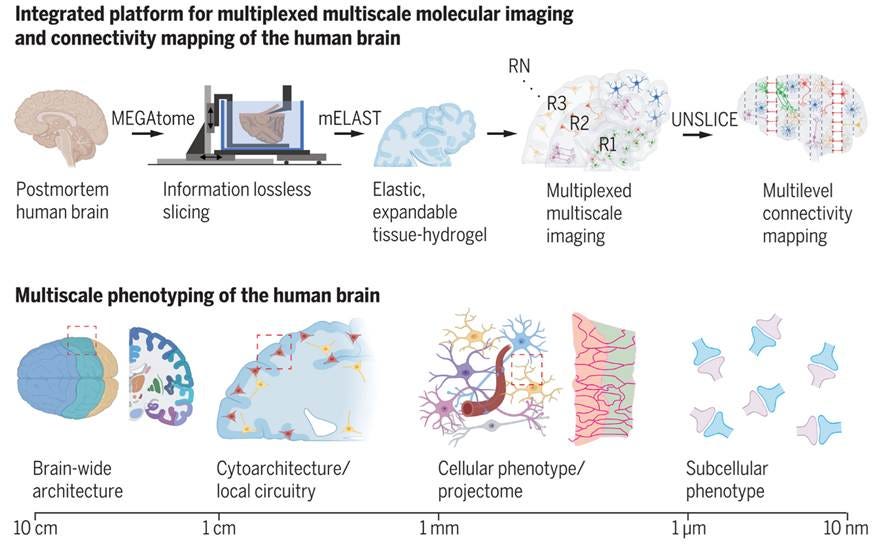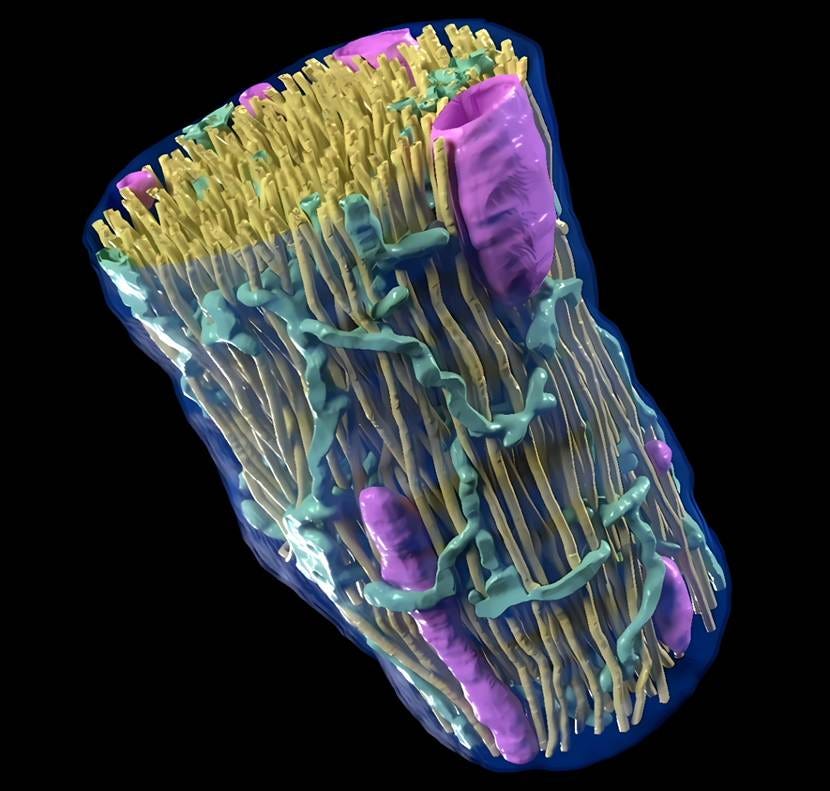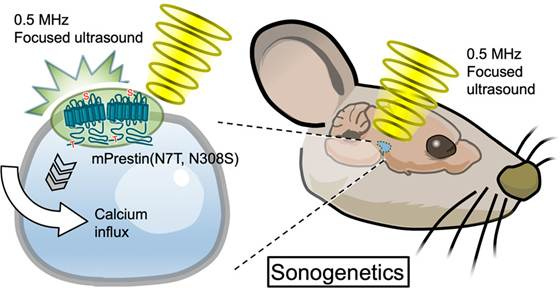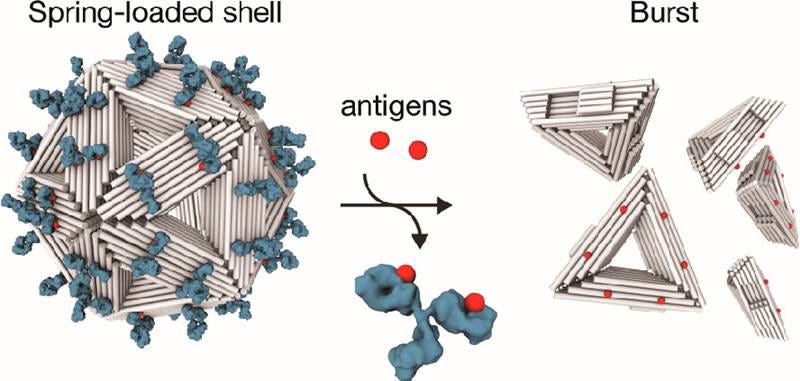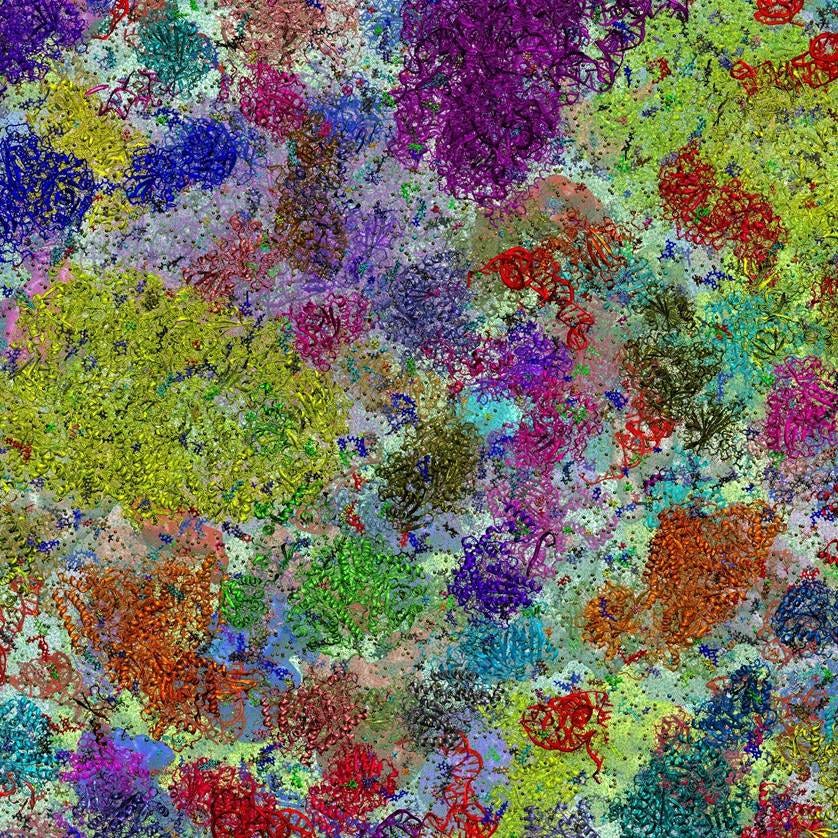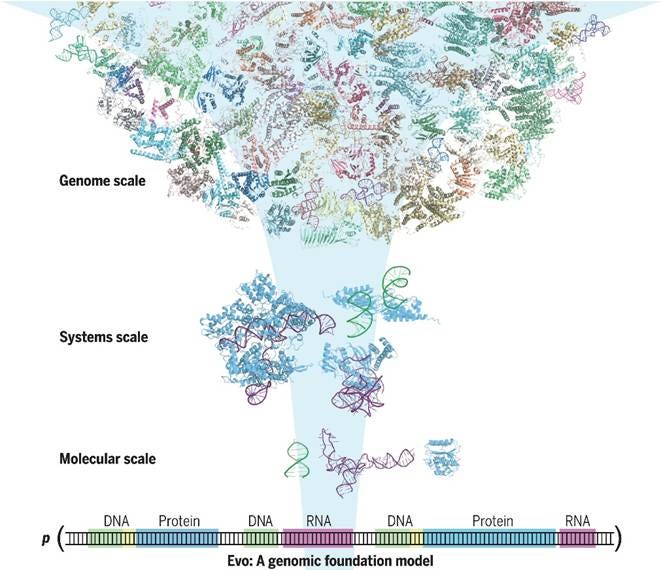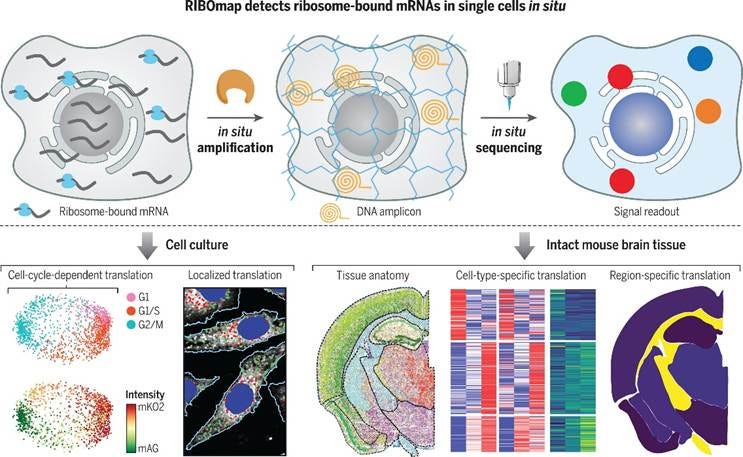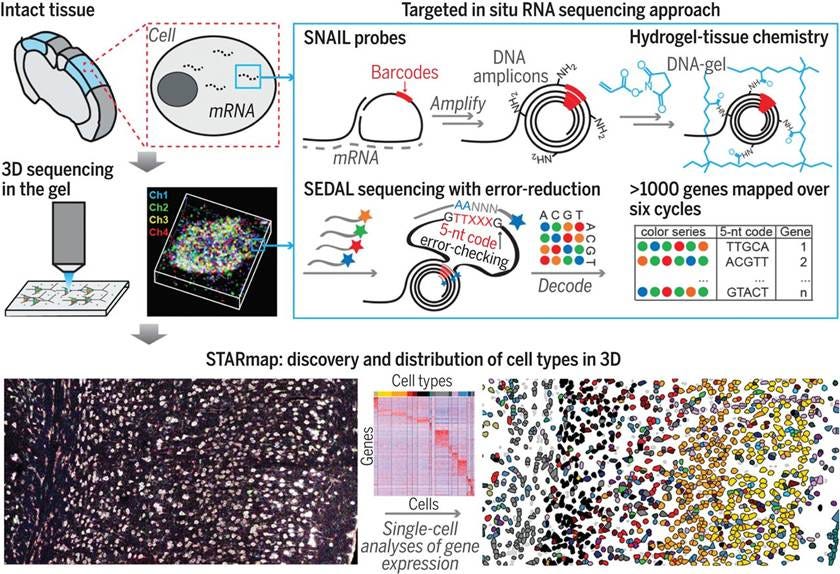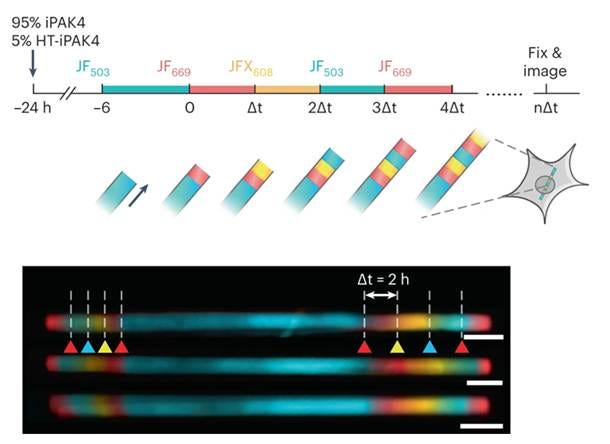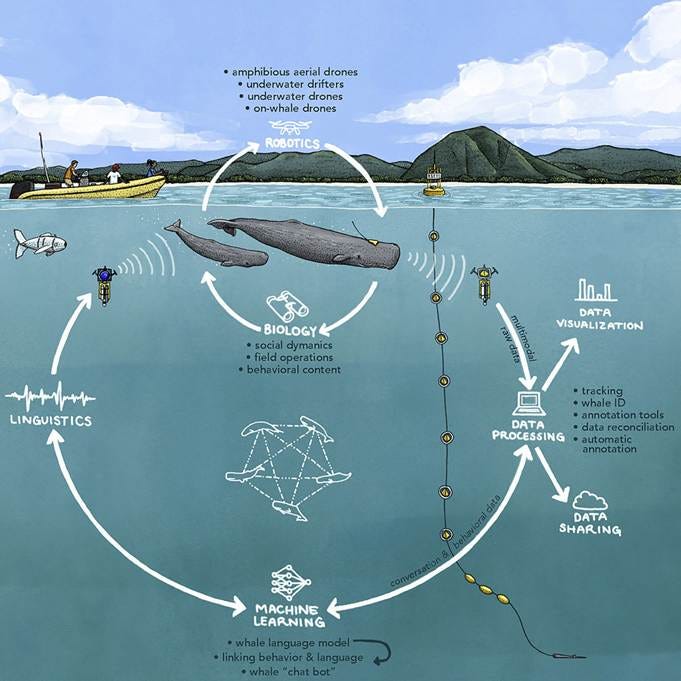Logan’s Selection of Awesome Research Papers
119 papers with titles + links; many with commentary and images
Across my many years of reading scientific papers, I have placed certain particularly exciting scientific papers in a folder called “favorites”. This list represents the contents of that folder (as of 7/1/2025). I have organized the papers by topic (synthetic biology, gene therapy, neuroscience-neurotech-neuromethods, nanotech, computational biology, fundamental biology, systems biology and methods, and other) and alphabetically within each topic heading. I have included commentary and images for many of the papers on the list. I think many readers will enjoy exploring these papers and find this list useful! Let me know your favorites as well in the comments or by reaching out directly!
SYNTHETIC BIOLOGY
Blueprinting extendable nanomaterials with standardized protein blocks (2024)
Bridge RNAs direct programmable recombination of target and donor DNA (2024)
Comments: a great new alternative to CRISPR for gene editing. Has a very interesting mechanism involving several RNAs working together at once.
Conjugation-Based Genome Engineering in Deinococcus radiodurans (2022)
De novo design of pH-responsive self-assembling helical protein filaments (2024)
De novo design of protein structure and function with RFdiffusion (2023)
Comments: revolutionary generative AI for protein design from the laboratory of Nobel laureate David Baker.
Designed proteins assemble antibodies into modular nanocages (2021)
Engineering an Escherichia coli strain for production of long single-stranded DNA (2024)
Engineering sonogenetic EchoBack-CAR T cells (2025)
Comments: exciting therapeutic for controllable yet potent CAR T treatment of cancer. Leverages an ultrasound-sensitive promoter and a genetic positive feedback loop circuit. My understanding is that this technology is under further development at the startup Acoustic Cell Therapy Inc.
Comments: very cool idea to use the Toxoplasma parasite for delivery of proteins in the brain after intraperitoneal delivery.
Genetic engineering of T cells for immunotherapy (2021)
Genetically encoded barcodes for correlative volume electron microscopy (2023)
Comments: the authors used engineered encapsulin proteins to genetically encode shape barcodes that are visible in electron microscopy images as concentric circles (with varying number of circles and diameter). I have had thoughts of doing something similar for x-ray microscopy, though the lower resolution would necessitate much larger complexes.
Comments: demonstration of a very futuristic idea; engineering bacteria to produce compounds which can be detected in the environment from nearly a hundred meters away by flying quadcopter drones. With addition of the right gene regulatory circuits, this can act as a way of monitoring chemical changes in the environment from the sky.
Programmable protein delivery with a bacterial contractile injection system (2023)
Comments: wicked-cool new delivery system developed in Feng Zhang’s laboratory. The authors engineered bacterial secretion systems to develop a syringe-like molecular protrusion for injecting proteins into cells, including Cas9, base editors, and toxins.
Synthetic biology 2020–2030: six commercially-available products that are changing our world (2020)
GENE THERAPY
A roadmap for affordable genetic medicines (2024)
Comments: CRISPR Nobel laureate Jennifer Doudna and her colleagues lay out an ambitious set of detailed policy recommendations for greatly decreasing the cost of gene therapies for rare diseases.
Comments: extremely exciting work where the authors use blood-brain-barrier crossing AAVs and a clever epigenetic silencing strategy to take a (preclinical) step towards a cure for currently untreatable fatal prion diseases. Of note is that the principal investigator on this study lost her mother to prion disease and is genetically at risk for the disease herself. She impressively quit her previous career in law, trained as a scientist, and attained a position as an MIT/Harvard Broad Institute principal investigator with the goal of curing this condition. It is a race against time. But I think she just might succeed!
Deep diversification of an AAV capsid protein by machine learning (2021)
Comments: Feng Zhang’s lab used an endogenous human protein that forms virus-like capsids to package mRNA for gene therapy. This protein comes from an ancient retrovirus that permanently integrated some of its viral DNA into the human genome (so it is now part of our own human genome) and lost its ability to act as an infectious agent.
In vivo magnetogenetics for cell-type-specific targeting and modulation of brain circuits (2024)
In vivo three-photon microscopy of subcortical structures within an intact mouse brain (2013)
Liquid foam improves potency and safety of gene therapy vectors (2024)
Comments: surprisingly large increase of AAV in vivo transduction efficiency when delivered with a foaming excipient substance. Interestingly, this happens when the foam concentrates the viruses within the films of its bubbles.
Comments: a great paper showing that AAVs noncovalently bound to magnetic nanoparticles can be targeted to desired layers of the retina. The penetration depth into the retina can be controlled by applying magnetic fields for varying lengths of time.
Comments: the first paper where Feng Zhang’s lab used an endogenous human protein which forms virus-like capsids to package mRNA for gene therapy delivery. Since this protein was “domesticated” into the human genome, it is non-immunogenic despite originally coming from an ancient retrovirus. This was the basis for the startup company Aera Therapeutics.
On-demand cell-autonomous gene therapy for brain circuit disorders (2022)
The promise and challenge of therapeutic genome editing (2020)
Comments: Nobel Laureate Jennifer Doudna charts a course for the field of therapeutic gene editing.
NEUROSCIENCE, NEUROTECH, NEUROMETHODS
A Complete Electron Microscopy Volume of the Brain of Adult Drosophila melanogaster (2018)
A complete reconstruction of the early visual system of an adult insect (2023)
Comments: volume electron microscopy study of part of the visual system of the tiny “microinsect” Megaphragma viggianii, a type of parasitoid wasp smaller than an amoeba (see size comparison image). Amazingly, Megaphragma’s brain contains only ~8,600 cells, 97% of which lack nuclei.
A petavoxel fragment of human cerebral cortex reconstructed at nanoscale resolution (2024)
Comments: 1 mm3 volume of human brain (containing ~57,000 cells and ~150,000,000 synapses) reconstructed in exquisite detail via electron microscopy and semi-automated tracing. While this is a tour de force accomplishment in neuroscience, it shows how far we have to go in order to reconstruct whole mammalian brains at similar resolution.
Comments: though the Blue Brain Project did not reach its lofty goals, I still think the vision of this perspective paper is commendable and has some elements of what we should aspire to in the future. We at least need the connectome though! (As well as lots of other biological data).
Cellular and Molecular Probing of Intact Human Organs (2020)
Cognitive Aspects of Comb-Building in the Honeybee? (2018)
Comments: this perspective/review illustrates that bees are remarkably intelligent and exhibit creative problem-solving skills which go far beyond preprogrammed instincts. Bees are smart!
Complex brain networks: graph theoretical analysis of structural and functional systems (2009)
Computational 3D histological phenotyping of whole zebrafish by X-ray histotomography (2019)
Comments: one of the more dramatic demonstrations of the power of synchrotron x-ray microscopy for rapid high-resolution imaging. Impressively, 1.5 mm3 volumes with voxel resolution of 0.743 µm were acquired in about 20 seconds each.
Could a Neuroscientist Understand a Microprocessor? (2017)
Cortical column and whole-brain imaging with molecular contrast and nanoscale resolution (2019)
Dense connectomic reconstruction in layer 4 of the somatosensory cortex (2019)
Dense 4D nanoscale reconstruction of living brain tissue (2023)
Comments: LIONESS combines a bunch of cutting-edge computational and experimental methods to achieve nanoscale super-resolution microscopy imaging of living brain tissue (ex vivo) and thus see nanoscale neuronal activity as well as morphological dynamics occurring in real time.
Dense neuronal reconstruction through X-ray holographic nano-tomography (2020)
Donor/recipient enhancement of memory in rat hippocampus (2013)
Comments: rat telepathy. What’s not to love about rat telepathy!?
Comments: the revolutionary first paper on expansion microscopy.
Expansion sequencing: Spatially precise in situ transcriptomics in intact biological systems (2021)
Gas cluster ion beam SEM for imaging of large tissue samples with 10 nm isotropic resolution (2019)
Imaging brain tissue architecture across millimeter to nanometer scales (2023)
Integrated platform for multiscale molecular imaging and phenotyping of the human brain (2024)
Comments: very nicely written paper that brings together a bunch of technologies to create a highly systematic approach for multiomic, connectivity, and morphological examination of human brain tissue.
Multisensory gamma stimulation promotes glymphatic clearance of amyloid (2024)
Near-infrared deep brain stimulation via upconversion nanoparticle–mediated optogenetics (2018)
Comments: upconversion nanoparticles absorb longer wavelength light (e.g. near-infrared and then emit shorter wavelength light (e.g. blue). The authors injected upconversion nanoparticles into the brains of mice expressing channelrhodopsins that respond to blue light, allowing minimally invasive neuromodulation using near-infrared light. A very exciting demonstration of a type of approach that I think will find utility in future neurotechnologies (though perhaps ultrasound will be more applicable for humans than near-infrared light).
Comments: Deblina Sarkar’s lab made these microscopic rectangles (and other shapes) of material that can be triggered to wrap around axons and dendrites like tiny tattoos. This might lead to new ways to modulate neuronal activity, monitor and sense changes within neurons, and more.
Mammalian Near-Infrared Image Vision through Injectable and Self-Powered Retinal Nanoantennae (2019)
Comments: I always love it when people invent superpowers. In this case, near-infrared vision (though only used in mice so far). This approach leverages upconversion nanoparticles that bind to photoreceptor cells and emit visible-spectrum light upon exposure to near-infrared light, stimulating the adjacent photoreceptors.
On the relationship between emotion and cognition (2008)
Comments: emotion and cognition are deeply intertwined and not as distinct as many people may believe.
Periodic ER-plasma membrane junctions support long-range Ca2+ signal integration in dendrites (2025)
Comments: biology never ceases to amaze. Turns out ladderlike endoplasmic reticulum (ER) structures in dendrites form membrane junctions at regular intervals where complexes of proteins mediate ER calcium release upon synaptic input. Because of the continuity of the ER, this can also facilitate calcium release at distant sites as far as 20 µm away from the incoming synapse, substantially altering dendritic computations. This paper is a good one to read for whole-brain emulation aficionados like myself to remember that we will need much more than just the connectome to properly emulate brain function. Biology has many more tricks up its sleeve than we think.
Reconstruction and Simulation of Neocortical Microcircuitry (2015)
Comments: simulations of multiple cortical columns by the Human Brain Project (HBP). Though the HBP has poor reputation due to its failure to meet its overly ambitious timeline for its lofty goals, this was still a cool early demonstration of (somewhat) realistic in silico simulation of a small brain region via multicompartmental Hodgkin-Huxley models. It should be noted that the connectivity was unfortunately based on statistical patterns found in the brain rather than actual connectomics data.
Sonogenetic Modulation of Cellular Activities Using an Engineered Auditory-Sensing Protein (2020)
Comments: an engineered protein called mPrestin(N7T, N308S) stimulates neuronal activity wherever it is expressed upon exposure to focused ultrasound (FUS). AAV gene delivery facilitates expression in the brain. In my view, this type of genetically targetable FUS neuromodulation is the future of brain-computer interfaces and a path to vastly better treatments for mental health.
Syringe-injectable electronics (2015)
Comments: an older paper from Charles Lieber’s lab, the original “neural lace” technology.
Spatial atlas of the mouse central nervous system at molecular resolution (2023)
The Hidden Control Architecture of Complex Brain Networks (2019)
The honeybee as a model for understanding the basis of cognition (2012)
Comments: bee pioneer Randolf Menzel makes a compelling case for the honeybee’s immense promise as a neuroscience model organism. Bees have truly remarkable intellectual capabilities. They deserve more attention!
The neuropeptidergic connectome of C. elegans (2023)
Comments: an important effort towards mapping how diffusible neuromodulators across the body of C. elegans influence its nervous system. One step forward towards C. elegans whole-brain emulation (and perhaps whole-body emulation too!)
The structural and functional complexity of the integrative hypothalamus (2023)
Comments: an early attempt at C. elegans emulation. Though not very advanced by today’s standards, this was still a very cool first try at connecting the worm’s nervous system with muscular actuation in a virtual environment. It impressed me when I first read about it some time ago. Nowadays, we are making further progress towards properly emulating C. elegans! There are some great newer papers I might add to this list at some point.
Ultrasound-Triggered In Situ Photon Emission for Noninvasive Optogenetics (2023)
Visual physiology of the layer 4 cortical circuit in silico (2018)
Wireless Recording in the Peripheral Nervous System with Ultrasonic Neural Dust (2016)
Comments: the original neural dust paper from Maharbiz lab. I am in communication with some folks who have much more recently begun to revisit this concept.
NANOTECH
A Logic-Gated Nanorobot for Targeted Transport of Molecular Payloads (2012)
Antigen-Triggered Logic-Gating of DNA Nanodevices (2021)
Comments: super cool paper where the Dietz lab creates DNA origami shells that burst open upon exposure to desired antigens, releasing therapeutic payloads. Truly cutting-edge nanotechnology!
Biotechnological mass production of DNA origami (2017)
Enzyme-Enabled Droplet Biobattery for Powering Synthetic Tissues (2024)
Gigadalton-Scale Programmable DNA Assemblies (2017)
Comments: DNA origami was used to construct ~450 nm structures with molecularly precise programmability. Some similarly sized assemblages have been made since the paper’s publication, but I believe this paper was the first example of DNA origami with such scale and complexity.
Parallel molecular data storage by printing epigenetic bits on DNA (2024)
Comments: a very clever way of packing data into pieces of DNA with epigenetic modifications. I want to see this scale up!
Programmable icosahedral shell system for virus trapping (2021)
Comments: the Dietz lab made these gigantic icosahedral shells out of DNA origami that are large enough to actually encapsulate and isolate viruses before allowing the immune system to sweep them away and dispose of them.
Rotaxane-Based Molecular Muscles (2014)
Comments: this review introduced me to the very exciting area of supramolecular nanotechnology. I want to see more activity and translation in this field!
Stereodivergent synthesis with a programmable molecular machine (2017)
The emergence of valency in colloidal crystals through electron equivalents (2022)
Towards artificial molecular factories from framework-embedded molecular machines (2020)
COMPUTATIONAL BIOLOGY
A molecular view on the escape of lipoplexed DNA from the endosome (2020)
Comments: coarse-grained molecular dynamics simulations exploring some mechanisms of DNA delivery via cationic liposomes.
Advances in protein structure prediction and design (2019)
Atoms to Phenotypes: Molecular Design Principles of Cellular Energy Metabolism (2019)
Comments: atomistic molecular dynamics simulation of a 100 nm3 volume of Mycoplasma cytosol, consisting of over 100,000,000 atoms! While largest simulation only covered 20 nanoseconds, this is an impressive achievement which highlighted the complicated dynamics of the crowded cytoplasmic environment.
Sequence modeling and design from molecular to genome scale with Evo (2024)
Comments: the Arc Institute’s famous Evo paper. A massive multimodal (DNA, RNA, protein) foundation model trained on bacterial and phage genomes which can predict the effects of mutations on protein function, predict protein functions across DNA and RNA and amino acid sequences, generate novel proteins, generate novel protein-RNA complexes like (e.g. Cas complexes), generate novel transposon systems, and even generate entire semi-realistic bacterial genomes (though the generated genomes are not functional, they have sequence patterns that closely resemble real genomes). A major stride forward in biology. This kind of model may someday be a close companion of all biological scientists, helping us to manage the complexity of the systems we study and engineer.
Whole-Cell Computational Model Predicts Phenotype from Genotype (2012)
Comments: an early whole-cell model which used kinetic reaction network approaches. More recent progress has been made in the form of a voxelized spatial whole-cell model. I might want to add that paper to this list when I get the chance.
FUNDAMENTAL BIOLOGY
Amazing structural diversity of giant virus-like particles in forest soil (preprint) (2023)
Comments: lovely transmission electron microscopy images of mysterious viruses (found in some random Massachusetts soil samples) that have crazy morphological characteristics! Some of these viruses are also huge, comparable in size to small bacteria.
Architecture of African swine fever virus and implications for viral assembly (2019)
Comments: explores the molecular biology of a large virus. Really goes to show how astonishingly complex and clever biological mechanisms can be even in viruses. African swine fever virus is a truly spectacular dynamic molecular machine.
Basic and Therapeutic Aspects of Angiogenesis Updated (2020)
Comments: a good educational review on angiogenesis which drives home the complexity of our own vascular physiology.
Blebbisomes are large, organelle-rich extracellular vesicles with cell-like properties (2025)
Comments: a fascinating new type of extracellular vesicle with weird and wonderful characteristics. Blebbisomes contain lots of other organelles and are quite large and complicated. Nicely written paper.
Contemporary Phage Biology: From Classic Models to New Insights (2018)
Exploring protein fitness landscapes by directed evolution (2009)
SYSTEMS BIOLOGY AND METHODS
Highly multiplexed spatial transcriptomics in bacteria (2025)
Comments: a method for expansion microscopy of bacteria that enables spatial transcriptomics of thousands of distinct RNAs within each individual bacterium. Also enables investigation of bacterial gene expression patterns in response to nutrient changes and in the mouse gut.
Integrative Imaging Reveals SARS-CoV-2-Induced Reshaping of Subcellular Morphologies (2020)
Nonlinear sound-sheet microscopy: Imaging opaque organs at the capillary and cellular scale (2025)
Comments: an ultrasound imaging technology analogous to light-sheet microscopy that facilitates rapid imaging. This has a lot of potential!
One-step nanoscale expansion microscopy reveals individual protein shapes (2024)
Comments: mind-blowing that these authors were able to achieve ~1 nm resolution using expansion microscopy, allowing much simpler, faster, and less expensive structural biology studies of proteins as well as structural examination of protein complexes that would be difficult to analyze with traditional techniques like cryo-EM.
Real-time dynamic single-molecule protein sequencing on an integrated semiconductor device (2022)
Scalable and Isotropic Expansion of Tissues with Simply Tunable Expansion Ratio (2019)
Comments: Slide-seq has been commercialized and is now an important tool for spatial transcriptomics studies with a wide variety of applications.
Spatially resolved single-cell translatomics at molecular resolution (2023)
Comments: Xiao Wang’s lab at MIT developed this clever way of spatially mapping ribosome-bound mRNAs throughout cells and tissues.
Three-dimensional intact-tissue sequencing of single-cell transcriptional states (2018)
Comments: STARmap is an awesome technique for 3D spatial transcriptomics. It was developed by Xiao Wang (now an MIT professor) and colleagues. I once led a journal club session on this paper back in undergrad!
Time-tagged ticker tapes for intracellular recordings (2023)
Comments: protein rods expressed inside of cells that “record” biomolecular events (e.g. gene expression changes) by adding colored fluorescent bands along their lengths. The cellular histories can be read out using fluorescence microscopy to examine the types and order of bands visible on the protein rods. Leads me to think that this type of strategy is underexplored and has enormous potential for all kinds of investigations!
Whole-Body Imaging with Single-Cell Resolution by Tissue Decolorization (2014)
OTHER
A New Empirical Constraint on the Prevalence of Technological Species in the Universe (2016)
Comments: this paper does some “back-of-the-envelope” calculations and makes a convincing argument that “as long as the probability that a habitable zone planet develops a technological species is larger than ~10−24, humanity is not the only time technological intelligence has evolved.”
Generative Agents: Interactive Simulacra of Human Behavior (preprint) (2023)
Comments: LLMs walking around in video game character bodies in a little village and talking to each other. With just a single user suggestion to do a Valentine’s Day party, they managed to coordinate the whole party autonomously.
Phototactic guidance of a tissue-engineered soft-robotic ray (2016)
Preventing antisocial robots: A pathway to artificial empathy (2023)
Comments: some good ideas for AI safety.
Comments: an excellent approach for treating cardiac conditions which brings together tissue engineering, biomaterials, surgical technology, and stem cell therapy. Very cyborg-esque!
The case for Mars terraforming research (2025)
Comments: I’m a strong proponent of terraforming, so it is exciting to see the perspective published in a high-tier journal. As an aside, lead author Erika Alden DeBenedictis is doing great work via her nonprofit research organization Pioneer Labs to use synthetic biology to help build the foundations of a future Mars terraforming project.
Toward understanding the communication in sperm whales (2023)
Comments: Project CETI is using AI to decode the language and dialects of whales (this paper maps out the project’s vision). It’s so exciting to live in a world where we might soon be able to directly talk to animals in their own language!

